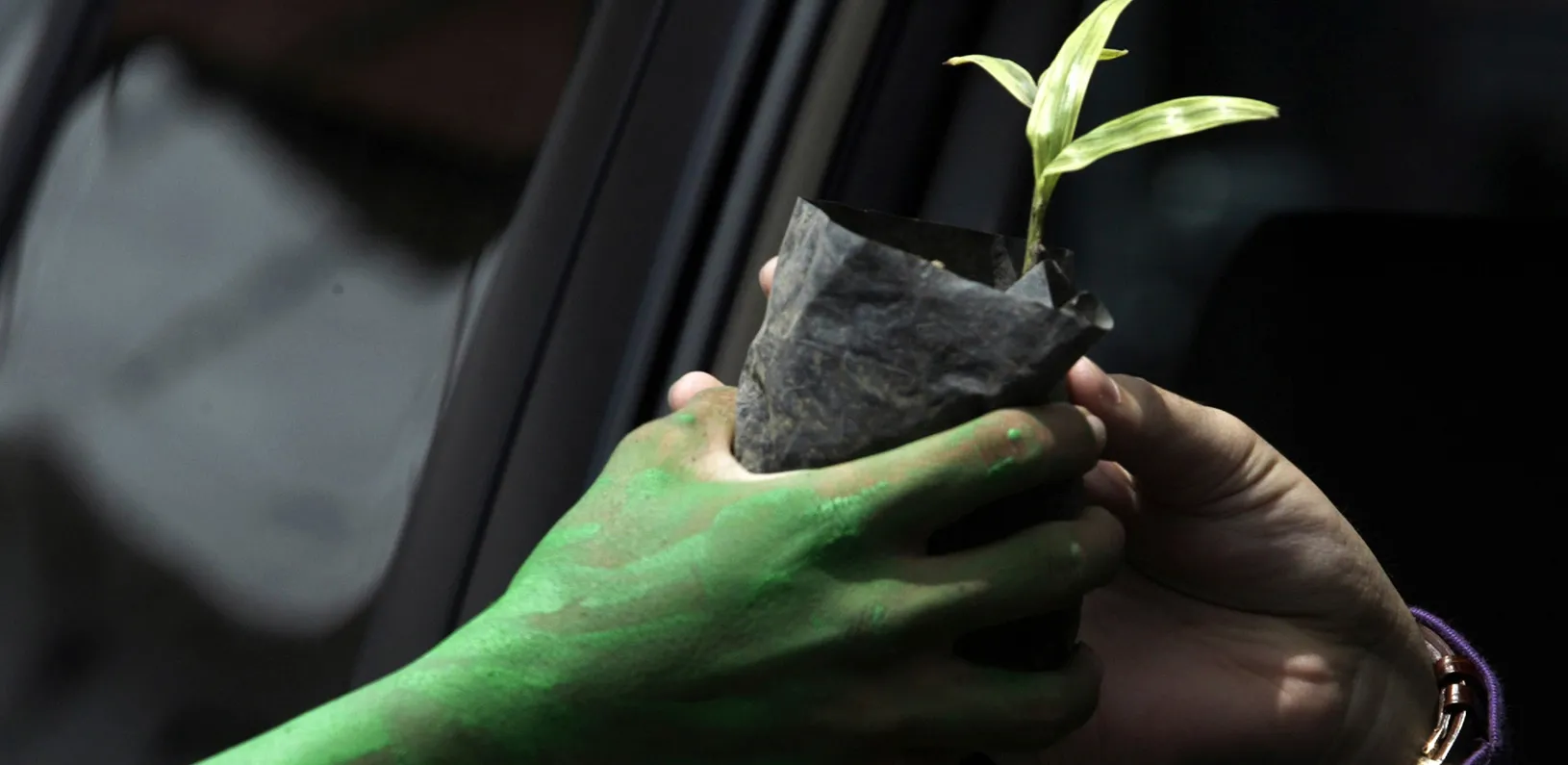Why Social Movements Should Favor Collaboration over Confrontation
What the Nature Conservancy can teach other groups fighting for social change.
May 21, 2015

Collaboration requires letting go of some of your favorite battles. | Reuters/Sigit Pamungkas
When people think about the environmental movement, too often they think about controversy. They think of Greenpeace, confrontations, and activists who are so passionate about what they believe in that they sometimes can’t hear other points of view.
At a speech April 23 at Stanford GSB, Mark Tercek, the president and CEO of The Nature Conservancy, presented another model of environmentalism: as a collaborative movement, in which environmentalists, business people, and government officials come together to tackle the biggest problems today. Water. Biodiversity. Even climate change.
His remarks were in the context of the environmental movement, but the ideas hold promise for all kinds of organizations taking on social causes. Nonprofit leaders inevitably confront the question: How do I scale my organization so that it’s large enough to take on a mountainous problem?
Faced with that question, many leaders immediately think about adding staff and resources, which translates to fundraising. Anyone who’s ever spent an entire half-year planning and hosting a fundraising gala knows how difficult it is to scale philanthropy. Fundraising consumes so much time — but it is the norm, and it has seemed there’s no other way.
Tercek, who’s also written a book, Nature’s Fortune: How Business and Society Thrive By Investing in Nature, shows how collaboration, on the other hand, can scale an organization’s endeavors. Take, for instance, Quito, Ecuador, 10 years ago.
The booming city was facing the question of how to supply clean water. The Nature Conservancy went to the local water company and suggested that instead of building a new plant to clean dirty water, the company set up a fund to invest upstream in protecting the watershed.
Not only was it cheaper, the city would get eco-benefits for free. Not surprisingly, the water company saw the force of the argument.
Look at all the people who came together to create the change. There was the Conservancy, the water company, a local beer brewer, and the Coca-Cola bottler, which all joined forces, providing money and connections.
The collaboration had a ripple effect; the change was far greater even than Nature Conservancy scientists who first were aware of the water issues in Quito probably imagined.
It turned out FEMSA, the dominant Coke bottler in Latin America, has headquarters in Monterrey, Mexico, which had a water problem too. FEMSA recruited leading industrial players in Monterrey to contribute $25 million to get a forest restoration project underway.
And, The Nature Conservancy has been able to open 30 water funds around the world using the same model.
The story holds many lessons for all of us trying to effect social change. One lesson is how difficult collaboration is. We’re not privy to what happened in the meetings between business executives and scientists, or teams of people had to work through the bureaucracy in a developing country. You can bet it was difficult.
To collaborate, you have to let go of some of your favorite battles and ways of making change. The Nature Conservancy in this case could have taken the old-fashioned, combative approach of haranguing poor farmers and ranchers upstream — which probably would have been slower and achieved, at best, a limited change.
Tercek says that environmentalists fight too much, couch their causes in terms of extreme good and evil — “we’re quick to make analogies with movements like civil rights, ending apartheid, ending slavery” — and have burned some bridges in the past by vilifying people on the other side of the debate.
Take a lesson from Greenpeace. Its executive director, Kumi Naidoo, adopts the attitude: Have no permanent friends and no permanent enemies. But if you can make progress, make it. That means engaging in a civil way with people whose point of view is different. Be pointed, but don’t vilify.
So Greenpeace organized campaigns against deforestation in the rainforest, which was soaring due to global demand for soy. The slogan for their campaign against McDonald’s: “Did you know Ronald McDonald is causing deforestation in the Amazon?”
The campaign won the attention of McDonald’s, which came together with companies including Cargill, agricultural players in Brazil, and the Brazilian government.
In this case, the campaigners did have a role, but they were ready to take a collaborative, pragmatic approach when the time came. And they can get much more done by leveraging the power of a company like Cargill. Companies have great power to spread an ethos; they are expert in establishing culture and ways of doing business that scale.
The Nature Conservancy is continuing to collaborate, bringing together the players, from industry to regulators, to community groups and campaigners. The Conservancy is having an impact many times its size, showing all of us we can scale our ability to tackle the causes we care about, faster and more effectively by collaborating rather than by scaling from within.
Sometimes it feels easier to fundraise, campaign, and fight, just because doing so is familiar. Collaboration is hard, messy work, and the solutions aren’t perfect. But I am convinced it’s the only way we can take on our biggest challenges, from mitigating climate change to alleviating poverty.
Dale T. Miller is the director of the Center for Social Innovation at Stanford Graduate School of Business and the Class of 1968 / Ed Zschau Professor of Organizational Behavior.
For media inquiries, visit the Newsroom.
Explore More

Psst — Wanna Know Why Gossip Has Evolved in Every Human Society?

How to Get Beyond Talk of “Culture Change” and Make It Happen



